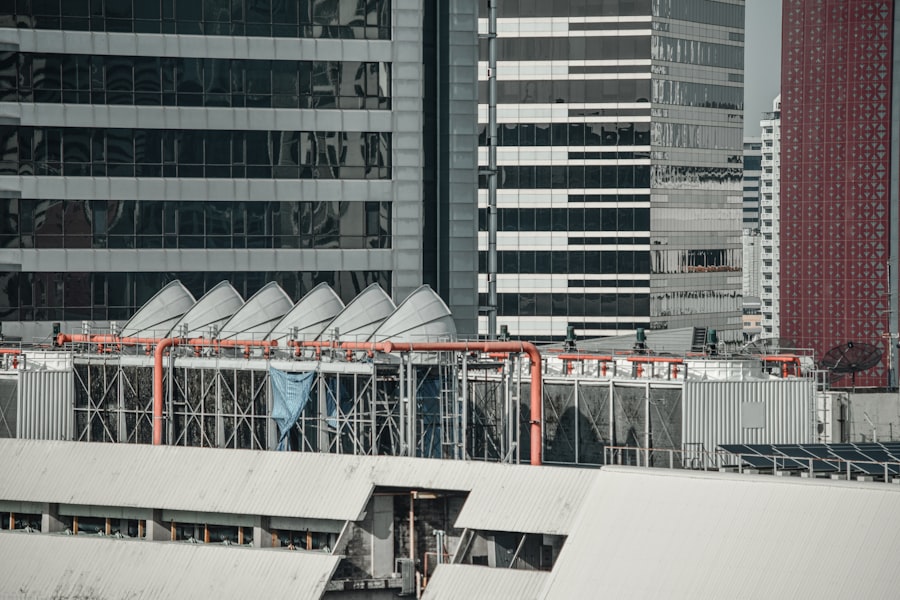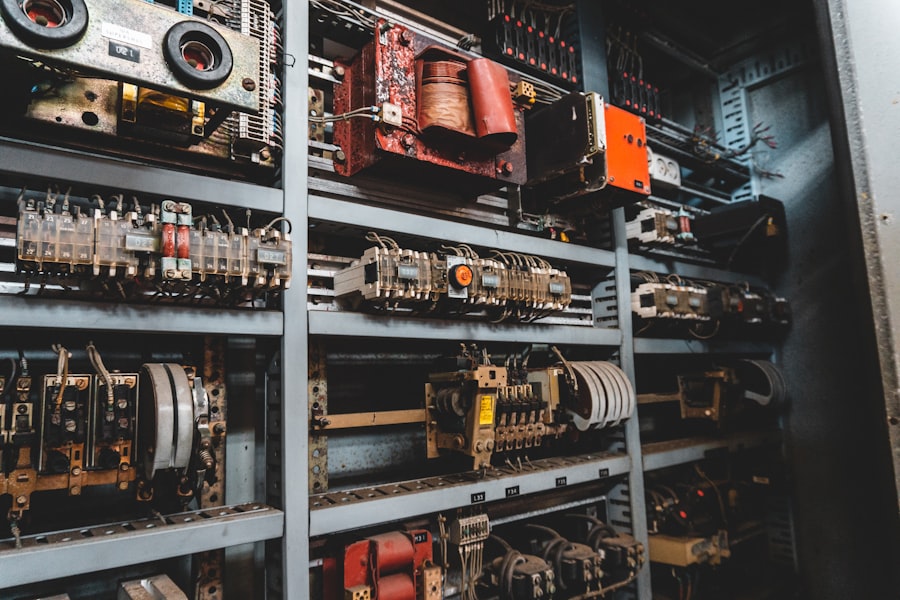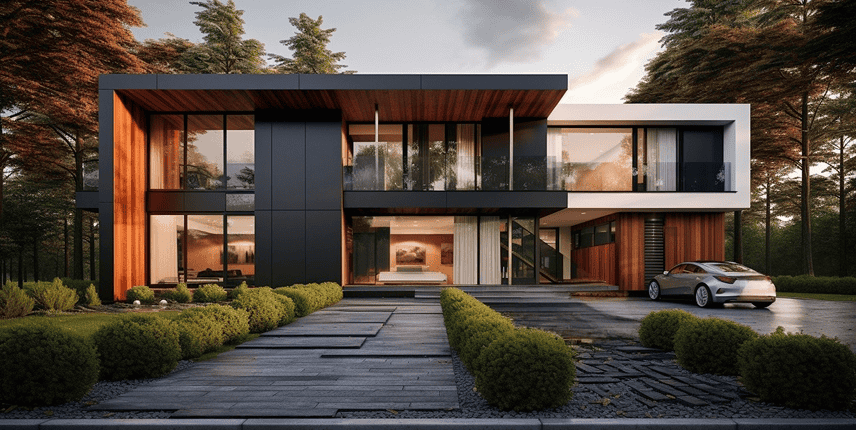Energy efficiency in HVAC (Heating, Ventilation, and Air Conditioning) systems is a critical consideration for both residential and commercial buildings. The HVAC system is often one of the largest consumers of energy in a building, accounting for nearly 40% of total energy use in commercial settings and up to 50% in residential environments. This significant energy consumption not only leads to higher utility bills but also contributes to increased greenhouse gas emissions, making energy efficiency a vital aspect of sustainable building practices.
By improving the energy efficiency of HVAC systems, building owners can reduce operational costs, enhance occupant comfort, and minimize their environmental footprint. Moreover, energy-efficient HVAC systems can lead to improved indoor air quality and overall health for occupants. Systems that operate efficiently tend to have better filtration and ventilation capabilities, which can reduce the presence of allergens, pollutants, and other harmful particles in the air.
This is particularly important in urban areas where outdoor air quality may be compromised. Additionally, energy-efficient systems often come equipped with advanced technologies that allow for better humidity control, further enhancing comfort levels within the space. As awareness of climate change and environmental issues grows, the push for energy-efficient HVAC solutions becomes increasingly relevant, making it essential for stakeholders to prioritize these systems in their planning and operations.
Key Takeaways
- Energy efficiency in HVAC systems is crucial for reducing energy consumption and costs.
- Selecting the appropriate HVAC system and maintaining it regularly ensures optimal energy performance.
- Smart thermostats and improved insulation significantly contribute to energy savings.
- Integrating renewable energy sources can enhance the sustainability of HVAC operations.
- Educating occupants and monitoring energy use support ongoing improvements in efficiency.
Choosing the Right HVAC System for Energy Efficiency
Selecting the appropriate HVAC system is paramount for achieving energy efficiency. Various types of systems are available, each with distinct advantages and disadvantages. For instance, heat pumps are known for their efficiency in moderate climates, as they transfer heat rather than generate it through combustion.
This can lead to significant energy savings compared to traditional heating systems. On the other hand, high-efficiency furnaces and boilers can be ideal for colder climates where heating demands are more pronounced. When choosing a system, it is crucial to consider factors such as climate, building size, and specific heating and cooling needs.
In addition to system type, the efficiency ratings of HVAC units should be carefully evaluated. The Seasonal Energy Efficiency Ratio (SEER) and the Annual Fuel Utilization Efficiency (AFUE) are two key metrics that indicate how effectively a system converts energy into heating or cooling output. A higher SEER rating signifies better cooling efficiency, while a higher AFUE rating indicates more efficient fuel usage for heating.
For example, a system with a SEER rating of 16 is significantly more efficient than one rated at 13. By investing in systems with higher efficiency ratings, building owners can achieve substantial long-term savings on energy costs while also contributing to a reduction in overall energy consumption.
Implementing Regular Maintenance and Upgrades for Optimal Performance

Regular maintenance is essential for ensuring that HVAC systems operate at peak efficiency. Neglecting maintenance can lead to decreased performance, increased energy consumption, and a shorter lifespan for the equipment. Routine tasks such as changing air filters, cleaning coils, and checking refrigerant levels can significantly impact the system’s efficiency.
For instance, a dirty air filter can restrict airflow, causing the system to work harder to maintain desired temperatures, which in turn increases energy usage. Scheduling seasonal maintenance checks with qualified technicians can help identify potential issues before they escalate into costly repairs. Upgrading components of an existing HVAC system can also enhance its efficiency.
For example, replacing an outdated thermostat with a programmable or smart thermostat can lead to better temperature control and reduced energy consumption. Additionally, retrofitting older systems with variable speed motors or high-efficiency fans can improve airflow and reduce energy waste. These upgrades not only improve performance but can also extend the life of the HVAC system by reducing wear and tear on components.
By prioritizing maintenance and considering strategic upgrades, building owners can ensure their HVAC systems remain efficient and reliable over time.
Utilizing Smart Thermostats and Controls for Energy Savings
| Metric | Description | Typical Range | Impact on Energy Savings |
|---|---|---|---|
| Energy Savings (%) | Percentage reduction in heating and cooling energy consumption | 10% – 30% | Direct reduction in HVAC energy use |
| Average Temperature Setback (°F) | Degrees the thermostat is adjusted during unoccupied periods | 4°F – 7°F | Helps reduce unnecessary heating/cooling |
| Programmable Schedule Accuracy (%) | How closely the thermostat follows user-defined schedules | 85% – 95% | Ensures energy is saved during off-peak times |
| Remote Control Usage (%) | Frequency of adjustments made via smartphone or web app | 30% – 60% | Allows real-time optimization of energy use |
| Integration with Other Smart Devices | Ability to connect with sensors, lights, and occupancy detectors | Yes / No | Enhances automated energy management |
| Payback Period (Months) | Time to recover investment through energy savings | 12 – 24 | Determines cost-effectiveness of installation |
| Reduction in Peak Demand (%) | Decrease in energy use during peak hours | 5% – 15% | Contributes to lower utility costs and grid stress |
The advent of smart technology has revolutionized how we manage HVAC systems, offering unprecedented opportunities for energy savings. Smart thermostats allow users to program heating and cooling schedules based on occupancy patterns, ensuring that energy is not wasted when spaces are unoccupied. For example, a smart thermostat can automatically lower the temperature during the night when residents are asleep or raise it during the day when no one is home.
This level of control not only enhances comfort but also leads to significant reductions in energy consumption. In addition to programmable features, many smart thermostats come equipped with learning capabilities that adapt to user preferences over time. They analyze historical data to optimize heating and cooling schedules automatically, further enhancing efficiency without requiring constant manual adjustments.
Some models even provide real-time energy usage reports and alerts when unusual patterns are detected, empowering users to make informed decisions about their energy consumption. By integrating smart controls into HVAC systems, building owners can achieve substantial energy savings while also improving user experience.
Improving Insulation and Air Sealing for Reduced Energy Loss
While efficient HVAC systems are crucial for energy savings, they cannot perform optimally if the building envelope is not adequately insulated or sealed. Poor insulation allows conditioned air to escape while letting outside air infiltrate the building, leading to increased energy consumption as the HVAC system works harder to maintain comfortable temperatures. Improving insulation in walls, attics, and floors can significantly reduce heat loss in winter and heat gain in summer, resulting in lower energy bills.
Air sealing is another critical aspect of reducing energy loss. Common areas where air leaks occur include windows, doors, electrical outlets, and ductwork. Sealing these leaks with caulk or weatherstripping can prevent conditioned air from escaping and unconditioned air from entering the building.
For instance, studies have shown that sealing ductwork can improve HVAC efficiency by as much as 20%, making it a worthwhile investment for building owners looking to enhance their energy performance. By focusing on insulation and air sealing improvements, buildings can create a more efficient thermal envelope that supports the effective operation of HVAC systems.
Incorporating Renewable Energy Sources for HVAC Systems

The integration of renewable energy sources into HVAC systems represents a forward-thinking approach to achieving sustainability goals while enhancing energy efficiency. Solar panels are one of the most common renewable technologies used in conjunction with HVAC systems. By harnessing solar energy to power heating or cooling equipment, building owners can significantly reduce their reliance on fossil fuels and lower their overall carbon footprint.
For example, solar water heaters can provide hot water for domestic use or even assist in space heating when paired with an appropriate HVAC system. Geothermal heat pumps are another innovative solution that utilizes renewable energy from the earth’s subsurface to provide heating and cooling. These systems take advantage of the relatively constant temperatures found underground to transfer heat efficiently between the building and the ground.
While the initial installation costs may be higher than traditional systems, geothermal heat pumps offer substantial long-term savings on energy bills due to their high efficiency and low operating costs. By incorporating renewable energy sources into their HVAC strategies, building owners not only enhance their sustainability efforts but also position themselves favorably in an increasingly eco-conscious market.
Educating Building Occupants on Energy-Saving Practices
While technical improvements to HVAC systems are essential for enhancing energy efficiency, educating building occupants about energy-saving practices is equally important. Occupants play a crucial role in how effectively an HVAC system operates; their behaviors directly impact energy consumption levels. For instance, encouraging occupants to dress appropriately for seasonal temperatures rather than relying solely on heating or cooling can lead to significant energy savings.
Simple actions like closing blinds during hot days or using fans instead of air conditioning can contribute to reduced reliance on HVAC systems. Workshops or informational sessions can be organized to raise awareness about best practices for using HVAC systems efficiently. Providing occupants with tips on how to adjust thermostats appropriately or maintain proper ventilation can empower them to take an active role in energy conservation efforts.
Additionally, creating a culture of sustainability within a building encourages occupants to be mindful of their energy usage habits continuously. By fostering an environment where everyone understands their impact on energy consumption, building owners can achieve greater overall efficiency from their HVAC systems.
Monitoring and Analyzing Energy Usage for Continuous Improvement
To ensure ongoing improvements in energy efficiency within HVAC systems, monitoring and analyzing energy usage is essential. Advanced metering technologies allow building owners to track real-time energy consumption data, providing insights into how much energy is being used by different components of the HVAC system. This data can help identify patterns or anomalies that may indicate inefficiencies or areas needing attention.
Regular analysis of this data enables proactive decision-making regarding maintenance schedules or potential upgrades. For instance, if monitoring reveals that a particular unit consistently operates at higher than expected levels of energy consumption, it may signal the need for repairs or replacement before it fails entirely. Furthermore, benchmarking against industry standards or similar buildings can provide valuable context for evaluating performance and identifying opportunities for improvement.
By committing to continuous monitoring and analysis of energy usage, building owners can create a dynamic approach to optimizing their HVAC systems for maximum efficiency over time.




